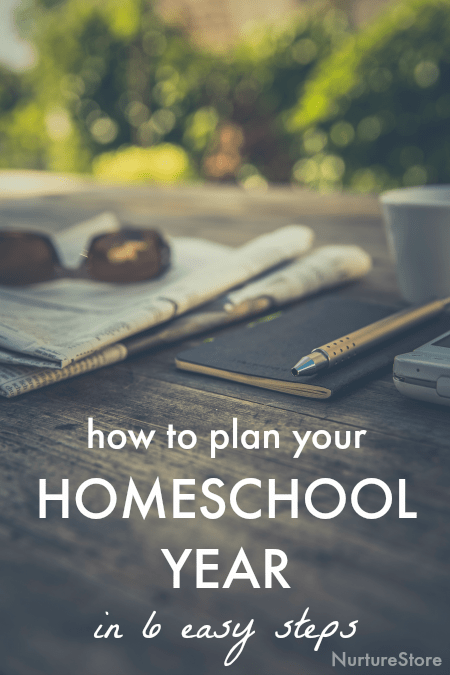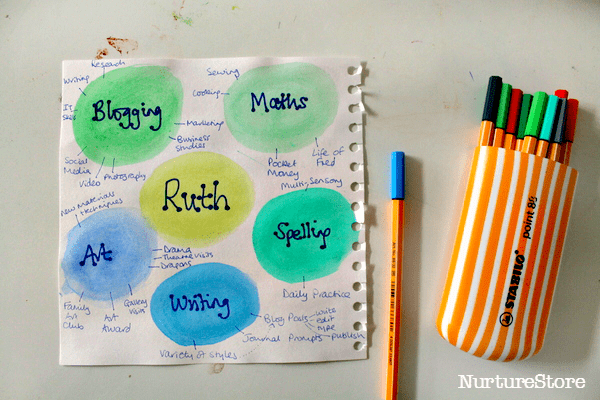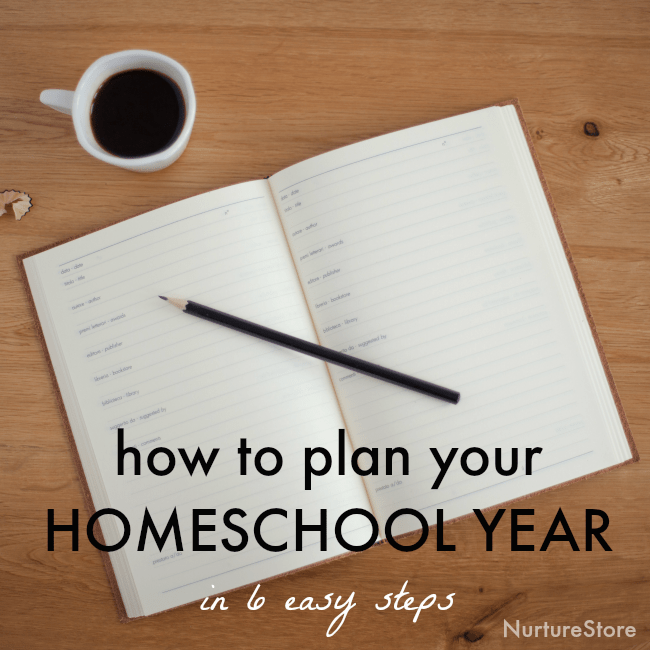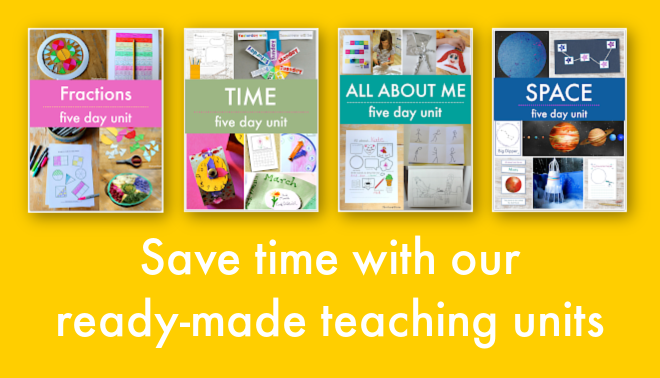Here’s my easy way to get organised when you’re wondering how to plan your homeschool year.

How to plan your homeschool year
Watch our Guide to How to Start Homeschooling
Click play on the video above to see our guide to how to start homeschooling. You’ll see the four steps you need to help you get started with homeschooling.
You’ll also find out about homeschool requirements and homeschool laws, and where to get ready-made lesson plans for homeschooling. Subscribe to NurtureStore’s YouTube channel to get more homeschooling videos!
January sees me in full-on planning mode. Raised by a woman who’s never without a to-do note, my mum taught me you can handle most anything so long as you have a list!
I’m a planner by nature, and I really like the reassurance and support of an organised homeschool* plan. My husband and I run a family business and he also works outside the home several days a week, so if we add in home education, chores and a wish for down-time too, things can get busy. I find we can combine all these things well, so that life feels happily full rather than hectic, if we have a plan.

Our home education plan for 2017
So here I am in January, planning out our year. I did this the day the Christmas tree came down, with a cup of coffee at hand, and it took me about an hour or so.
We use mindmaps to draw up an overall idea with our children of the topics they (we want) to cover in the year. This time, with a 13- and a 10-year-old, the plan looks like this:
:: core studies of math (Life of Fred) and literacy
:: our book club monthly reads giving a new topic or theme to learn about each month, including literary criticism, geography, social studies, and science
:: art workshops providing new artists, techniques and materials to explore through the year
:: drama and gymnastics as the girls’ chosen classes
:: project-based learning around the girls’ own choice of topics
:: add in life-skills, nature walks, home education social groups and free time and that’s their basic timetable

How to organise your home school plan in 6 easy steps
Six easy steps – that sounds do-able, right? Here’s how I’m planning this year:
One: gather your materials
I’m using a Personal Planner A4 size journal this year. I’ve used their smaller diaries for a few years but I am loving the extra space of the larger version, where I can have a year, month, week and daily to-do plans all in one place. I use a pen to put in definite dates, and a pencil for maybes. I’ll have the laptop there too so I can check in with the local galleries’ and museums’ what’s-on listings for the year.
Two: high days and holidays
I firstly go through my planner and put in the high days and holidays: festivals, birthdays, that kind of thing. Sundays are reserved as a kind of Sabbath day of rest, when we head out for a nature walk and have a lazy afternoon.
Three: set commitments
Next I write in events that are top priority and have to happen: my work days, book club, art workshops, drama and gymnastics classes, our home education social group. I mainly work in the mornings, Monday to Wednesday, and our core math and literacy work happens in a two-hour block in the afternoons, Monday to Thursday, so these sessions get reserved in the diary.
Four: added extras
Then I take a look at what’s happening near us through the year: galleries, museums, local festivals. Home education offers the wonderful benefit of being able to get out into the community often, to learn in the real world, and we like to take advantage of this.
I still like us to focus on our the children’s main topics for the year, rather than rather randomly picking events nust because they happen to be available, so I’ll focus on booking in days that match-up with what the girls have chosen to learn. This year that includes visiting the International Slavery Museum in Liverpool to fit with our book club reading of Stella by Starlight, and going to several exhibitions at the Tate to coincide with artist studies we’re doing in our art workshops.
I also put in some seasonal ideas like heading to the beach and river in the summer.
Five: project time
A key part of our home education is project time. The girls are free to choose a topic and then they will set off to explore and learn for themselves. I’ll help them get started and mentor them along the way with suggestions and reviews to support them to keep on exploring, but this is a time where they lead the learning. In the past topics have included dragons, the arctic, the human body, the weather, make up and art.
I make sure we have some time in the week set aside for this: so their projects don’t get lost in a busy week, and so that they have a generous chunk of time to really get deep into the flow of their project work: a whole morning or day rather than just an hour.
Six: free time and rest days
With all the essentials booked in, and time reserved for work, core learning and projects, I can now look at each month at a time and see what we have left.
It’s essential for our family and how we are happiest to have days-out balanced with days at home. Too much out of the house and the introverts wilt; too little socialising and the extroverts pine! With the set number of days a month gives us all, I take a month overview and see if we have too much planned in which case something has to go, or if we could plan another day out that month.
How do you plan your home school?
So that’s how I plan our home school year. What about you? Are you a list-maker too?
Do you use pen and paper, or have you got a favourite app you use? What is your focus for your home learning this year?
Join in the conversation in the comments and let me know how far in advance you plan your learning programme.
* Homeschool or home education? Home school seems to be the term used most often in the US, and in the UK it’s usually called home education. Unschooling, life learning, project based homeschool, flexi-schooling, free range learning, education otherwise… there are many ways to describe how children learn when they are not in school full-time. At home I mostly refer to what we do as home education. Online at NurtureStore I mostly use home school, as that terms seems most widely recognised by my international readership. But let’s not get caught up in language knots. Everyone’s version of learning looks different, and everyone is welcome here.




Hi! I’m the woman who is never without a to-do note!
Enjoyed reading your plans for the year.
Always here to help/join in/ take out/eat cake with!
motto for the year;
How can a canary that is full of joy sit in a cage and sing?
Some good stuff here! Pen and paper planning is the way I organise our home education into a rhythm, which I usually refer to as eclectic, life learning and project based. I totally understand having to balance between the introverts and extroverts as well. I organise a few months in advance and ‘edit’ our plans as necessary. We do the usual math,reading and writing, traditional cooking, nature observation/study and nature journals,art and drawing, and the latest projects range from silk painting, hands on history projects, science experiments and storywriting. Right now they are in the midst of making their first ‘film’,all written ,acted and filmed by the children.